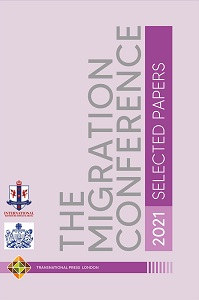Complementary Protection Between Human Rights Obligations and Humanitarian Motives: Italian Case Study
Complementary Protection Between Human Rights Obligations and Humanitarian Motives: Italian Case Study
Author(s): Gabriella Morrone, Maria Teresa Rovitto, Mariella Crisci
Subject(s): Human Rights and Humanitarian Law, Migration Studies, Asylum, Refugees, Migration as Policy-fields
Published by: Transnational Press London
Keywords: Complementary protection; Human Rights Obligations; Humanitarian Motives; Italian Case Study;
Summary/Abstract: Complementary protection has emerged over the last decades as a generic label including all such forms of protection used by States to avoid the return of asylum seekers who have failed their claim under the 1951 Geneva Convention but cannot be returned to their countries of origin for various reasons, and in order to comply with their non-refoulement obligation under international law. It may be interpreted as the result of a protection gap deriving from the fact that the Geneva Convention definition of a refugee does not cover the protection needs of all persons – and there might be people needing protection, who nevertheless fall outside the scope of the Convention. There are large discrepancies in States’ understandings of who should benefit from complementary protection: many countries grant complementary protection to those persons who do not qualify for international protection, but cannot be returned to their countries because of binding human rights obligations. Some others allow persons to remain in their territories, on the basis of compassionate or humanitarian grounds. The significance of these humanitarian reasons is discretional and varies from state to state(Feijen, 2021).
Book: The Migration Conference 2021 Selected Papers
- Page Range: 295-298
- Page Count: 4
- Publication Year: 2021
- Language: English
- Content File-PDF

